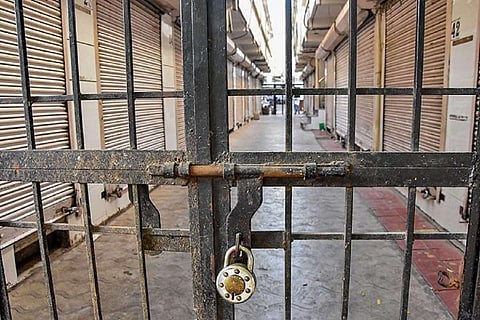

The Karnataka government announced a lockdown in Bengaluru between July 14 and 22. The decision came in the backdrop of the increasing number of patients contracting COVID-19, with Bengaluru alone having 12,793 active cases.
Karnataka’s Department of Health and Family Welfare had several primary reasons to impose the week-long lockdown. Over the last two weeks, at least 1,000 patients tested positive for the coronavirus every day in Bengaluru city, making it difficult for the Bruhat Bengaluru Mahanagara Palike to trace patients, overcome testing backlogs and mobilise manpower for tracing primary and secondary contacts.
The BBMP gets its daily list of patients, who tested positive in Bengaluru from the Indian Council of Medical Research every evening. With the lack of adequate manpower to trace patients on ICMR’s daily line list, the BBMP requires time and a lockdown can help clear backlogs, said Director of the Department of Health and Family Welfare, Omprakash Patil.
“BBMP has to identify which zones these patients on ICMR’s list are located. They are able to identify most of these but there are still some backlogs. Some patients call and tell BBMP themselves due to this. With the lockdown, it will be easier to clear backlogs and identify people since they will have to remain home,” Director Omprakash Patil said.
The BBMP is in the process of forming booth-level committees in various zones in the city. Members of these committees will begin tracing primary and secondary contacts of over 60% of the patients currently in isolation. BBMP Commissioner BH Anil Kumar said that booth-level teams would be ready by July 14 and its members would begin the tracing process during the lockdown.
“There are many people who are not aware of whether they are primary or secondary contacts of patients. Since they don’t know, how will they quarantine themselves? If any of them are asymptomatic carriers, they may not even know that they have COVID-19 as they have not been traced. This lockdown is to ensure that such people do not come into contact with others and this can be done only by restricting movement,” Omprakash Patil added.
Last week, there were approximately 11,000 samples pending for testing. Although Bengaluru has 22 approved testing labs, most of the samples are sent to government labs in National Institute of Mental Health and Neuro Sciences (NIMHANS), according to the Health Department. “During this period, we will ensure that samples are distributed evenly between private and government labs. We are also in the process of creating more COVID-19 Care Centres. All district level-hospitals will have at least 125 oxygen beds. 70% of the work is almost complete and it will be ready by the end of the month,” Omprakash Patil said.
The oxygen beds in taluk-level hospitals will be ready by the first week of August, he added.
The BBMP and the Department of Health and Family Welfare started using rapid antigen test kits on Saturday to clear testing backlogs. However, sources in the Health Department said that these tests are effective only in clusters and even if a person turns positive or negative in an antigen test, an RC-PCR test would be required to confirm whether the person has COVID-19 or not. “Antigen tests are not RNA tests. If a person is negative in an antigen test, it could be possible they would be positive in an RC-PCR test. At cluster level, it will be easier to identify those who are positive via antigen tests and reduce the load for RC-PCR tests,” he added.